| Tilted Donut Wedge with Two Balls | |
|---|---|
 | |
| Medium | Sculpture |
| Location | Besselpark, Berlin, Germany |
Tilted Donut Wedge with Two Balls is an outdoor sculpture by Fletcher Benton, installed at Besselpark in Berlin, Germany. [1] [2]
| Tilted Donut Wedge with Two Balls | |
|---|---|
 | |
| Medium | Sculpture |
| Location | Besselpark, Berlin, Germany |
Tilted Donut Wedge with Two Balls is an outdoor sculpture by Fletcher Benton, installed at Besselpark in Berlin, Germany. [1] [2]

Berlin is the capital and largest city of Germany by both area and population. Its 3.7 million inhabitants make it the European Union's most populous city, according to population within city limits. One of Germany's sixteen constituent states, Berlin is surrounded by the State of Brandenburg and contiguous with Potsdam, Brandenburg's capital. Berlin's urban area, which has a population of around 4.5 million, is the second most populous urban area in Germany after the Ruhr. The Berlin-Brandenburg capital region has around 6.2 million inhabitants and is Germany's third-largest metropolitan region after the Rhine-Ruhr and Rhine-Main regions. There has been an unsuccessful attempt to unify both states in 1996 and the states cooperate on many matters to this day.

Vienna is the national capital, largest city, and one of nine states of Austria. Vienna is Austria's most populous city, with about two million inhabitants, and its cultural, economic, and political center. It is the 6th-largest city proper by population in the European Union.

A doughnut or donut is a type of food made from leavened fried dough. It is popular in many countries and is prepared in various forms as a sweet snack that can be homemade or purchased in bakeries, supermarkets, food stalls, and franchised specialty vendors. Doughnut is the traditional spelling, while donut is the simplified version; the terms are often used interchangeably.

A snow roller is a rare meteorological phenomenon in which cylindrical snowballs are formed naturally as chunks of snow roll down hill or are blown along the ground by wind, picking up further snow along the way, in much the same way that the large snowballs used in snowmen are made. They can be as small as a tennis ball, but they can also be bigger than a car. Most snow rollers are a few inches or centimeters wide.
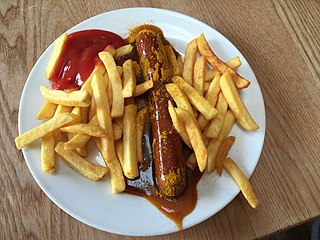
Currywurst is a fast food dish of German origin consisting of steamed, fried sausage, usually pork, typically cut into bite-sized chunks and seasoned with curry ketchup, a sauce based on spiced ketchup or tomato paste topped with curry powder, or a ready-made ketchup seasoned with curry and other spices. The dish is often served with fries.

Mister Donut is an international chain of doughnut stores. It was founded in the United States in 1956 by Harry Winokur. Primary offerings include doughnuts, coffee, muffins and pastries. After being acquired by Allied Domecq in 1990, most of the North American stores became Dunkin' Donuts. Outside of the United States, Mister Donut maintains a presence in Japan, El Salvador, Philippines, Thailand, Taiwan, Lagos and Ibadan in Nigeria.
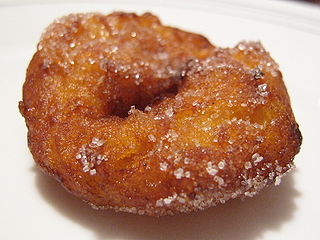
A buñuelo is a fried dough fritter found in Spain, Latin America, Israel, and other regions with a historical connection to Spaniards or Sephardic Jews, including Southwest Europe, the Balkans, Anatolia, and other parts of Asia and North Africa. Buñuelos are traditionally prepared at Christmas, Ramadan, and among Sephardic Jews at Hanukkah. It will usually have a filling or a topping. In Mexican cuisine, it is often served with a syrup made with piloncillo.

The British Mark V tank was an upgraded version of the Mark IV tank.
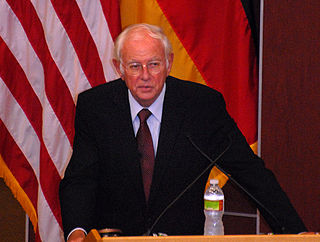
Klaus Scharioth is a former German diplomat. From 2006 to 2011 he served as Germany's ambassador to the United States. Since 2011 he has been dean of the Mercator Fellowship on International Affairs. He is also a Professor of Practice at the Fletcher School at Tufts University and a commentator on relations between Germany and the United States.
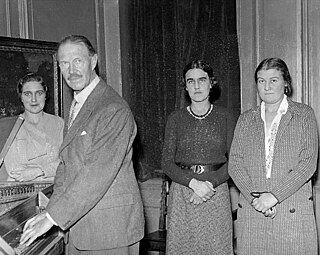
Major George Henry Benton Fletcher was a collector of early keyboard instruments including virginals, clavichords, harpsichords, spinets and early pianos. His collection is currently housed and kept in playing condition by the National Trust in Fenton House, a beautiful late 17th century merchant's house in, Hampstead, north London.

The Berlin International Film Festival, usually called the Berlinale, is a film festival held annually in Berlin, Germany. Founded in West Berlin in 1951, the festival has been held every February since 1978 and is one of the "Big Three" alongside the Venice Film Festival in Italy and the Cannes Film Festival in France. Since 2019, Mariette Rissenbeek has been the festival's executive director; Carlo Chatrian is its artistic director.
Fletcher C. Benton was an American sculptor and painter from San Francisco, California. Benton was widely known for his kinetic art as well as his large-scale steel abstract geometric sculptures.

The DBAG Class 605, commonly known as the ICE TD is a high-speed diesel multiple unit (DMU) train, formerly in service with Deutsche Bahn and DSB.

Berlin is recognized as a world city of culture and creative industries. Numerous cultural institutions, many of which enjoy international reputation are representing the diverse heritage of the city. Many young people, cultural entrepreneurs and international artists continue to settle in the city. Berlin has established itself as a popular nightlife and entertainment center in Europe.
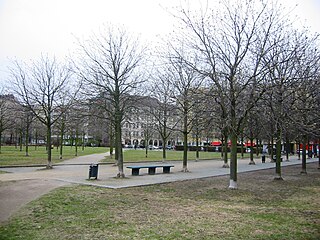
Besselpark is a park in Kreuzberg, Berlin, Germany. The sculpture Tilted Donut Wedge with Two Balls is installed in the park.

The Big Maple Leaf (BML) is a $1 million (CAD) gold coin weighing 100 kilograms (220 lb). A set of six of these coins was produced by the Royal Canadian Mint (RCM) in 2007, at their Ottawa facility where the first BML produced remains in storage. As of March 2017, the market value of a single Big Maple Leaf had reached approximately $4 million (USD). On 27 March 2017, one of the coins was stolen from a Berlin museum.
Gay balls, cross-dressing balls or drag balls, depending on the place, time, and type, were public or private balls, celebrated mainly in the first third of the twentieth century, where cross-dressing and ballroom dancing with same sex partners was allowed. By the 1900s, the balls had become important cultural events for gays and lesbians, even attracting tourists. Their golden age was during the Interwar period, mainly in Berlin and Paris, even though they could be found in many big cities in Europe and the Americas such as Mexico City and New York City.